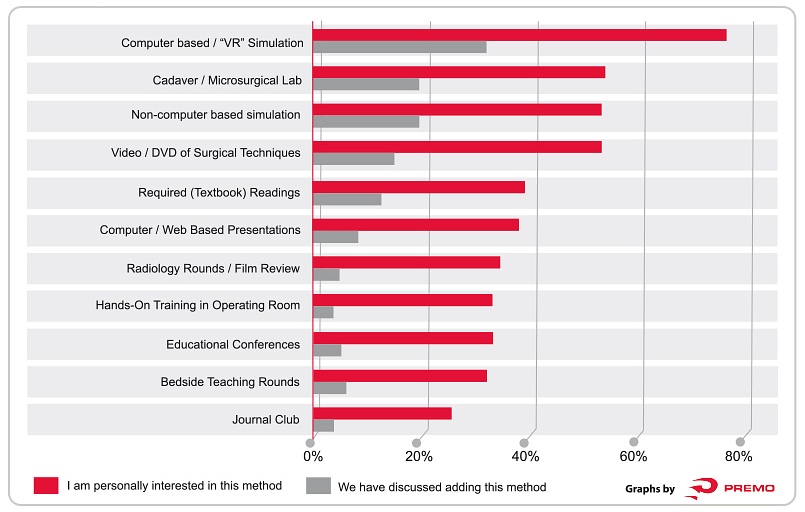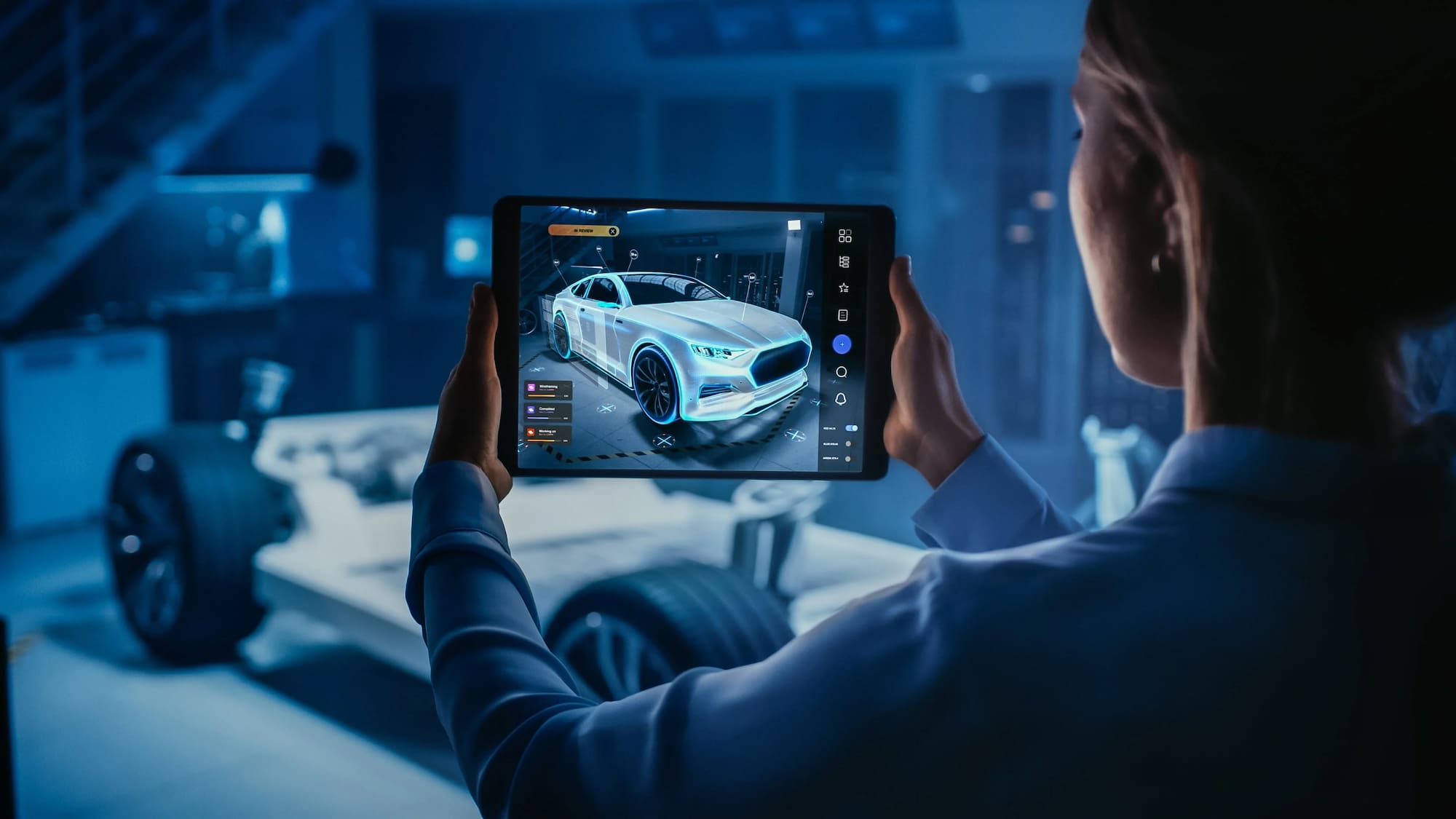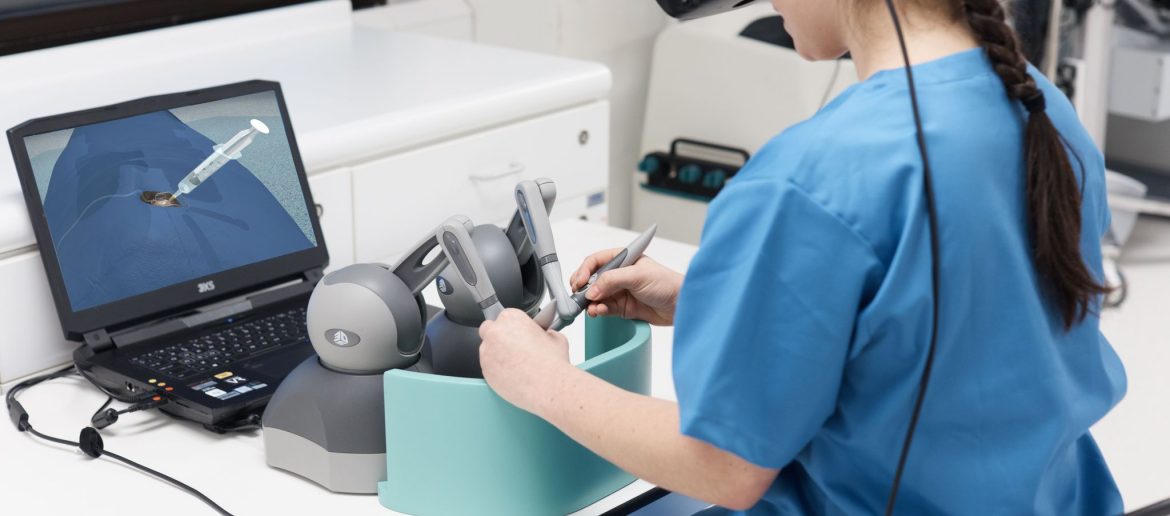Today, VR technology is helping doctors in many areas of healthcare. However, the treatment of mental disorders, rehabilitation therapy, surgery and ophthalmology are among the most promising areas of application.
Modern virtual reality surgical simulators are a valuable source of practice for future surgeons. They significantly improve training outcomes. Even experienced professionals can benefit from “virtual surgeons”. For example, simulators allow doctors to work through surgical scenarios and choose a specific strategy for each individual case.
The technology is developing a unique approach to healthcare, allowing doctors to plan a surgical procedure in virtual reality for a specific person – using a combination of CT and MRI to create a three-dimensional replica of the patient.
With the use of VR, surgical pathways along with the training of surgical skills can be explored safely, in a cost-effective manner.
— National Institutes of Health
How Virtual Reality Improves Surgical Skills
Novice surgeons usually practice on cadavers or assist more experienced doctors before performing surgeries. VR technologies allow them to practice their skills without putting physical patients at risk.
VR in surgical training helps surgeons observe the procedure as they handle the scalpel, rather than looking over the shoulder of a more experienced doctor.
Our team developed a VR product in the form of a human-sized mannequin that simulates the human cardiovascular system. Cardiac surgeons can improve their skills using it. Visit our dedicated website page to read more about it.
And see how the virtual reality laparoscopic simulator works:
The American Johnson & Johnson Institute has launched VR training in orthopedic surgery — this program is designed to train future surgeons, orthopedists, and scrub nurses. Practicing and bringing the basic surgery manipulations to automatisms, like total joint replacement (hips, knees) and femoral neck fracture fixation using screws, is the program objective.
Besides, using VR simulation in training helps surgeons master the latest surgical devices and techniques as this way of training is faster and develops muscle memory, allowing doctors to improve patient treatment results.
Ready to Implement VR Training?
SmartTek offers custom virtual reality development services with a rock-solid track record of success tailored to your needs.
Contact usWe knew VR could help surgeons learn new procedures faster than traditional teaching methods like watching videos or reading textbooks… what would have been nearly impossible just a short while ago is now within our reach thanks to Oculus.”
— SANDRA HUMBLES, Vice President of Johnson & Johnson Medical Devices

Other Ways of Using Virtual Reality in Surgery
Modern virtual reality surgery simulators feature comprehensive visual and technological capabilities, allowing healthcare personnel to use such products to solve a range of tasks.
Medical university students’ training
While running the Stanford Virtual Heart app, for example, you can explore the human heart anatomy through a VR headset. The project was launched by the Stanford University School of Medicine and supported by VR Oculus.
Surgeons and students are using VR to identify heart defects and learn to understand what is happening to the patient. But there are other benefits beyond education. VR simulation saves a lot of money because it costs much less than the physical models used previously.
Joint work for medical workers
The technology helps specialists who are far away and cannot be physically present during the surgery to get involved in the procedures.
In 2022, surgeons from different countries used VR headsets to work together and successfully separate Brazilian twins born with conjoined heads.
The surgery lasted more than 27 hours, and more than 100 healthcare professionals took part in it in total. According to researchers, surgery success can become a starting point for virtual reality used in other rare cases requiring the joint work of multiple surgeons.
An alternative to sedative drugs
During surgical operations, patients take sedatives along with anesthesia to reduce emotional stress. Belgian doctors proved experimentally that virtual reality can successfully serve the same purpose.
The participants wore headphones and VR headsets and watched a relaxing simulation video about underwater animals. The video clip featured a story read in a soothing voice by an announcer.
According to the experiment results, 70% to 90% of patients from different control groups lay calmly on the surgical table without taking sedatives.
Want to build an AR/VR application?
We are ready to be your trusted technology partner with proven expertise in immersive technologies.
Let’s talkVirtual reality in cosmetology
In this case, the technology meets patients’ needs rather than surgeons’ ones. VR technologies let patients see how this or that part of their body or face will change after the plastic surgery.
Using 3D modeling software, patients can assess their impending appearance changes brought by surgical procedures (from eye-sack removal to breast augmentation) or fillers/botox and other injections.
We have described far from all examples of virtual reality used in surgery. The potential of this technology is growing, VR apps are becoming more powerful and can be developed for various needs.
We provide world-class healthcare VR development services for surgery, creating immersive and interactive simulations that expand the capabilities of medical professionals.
Ready to implement a VR training or other immersive product? Contact us and let’s discuss the details.






 view the post
view the post
 view the post
view the post
 view the post
view the post

